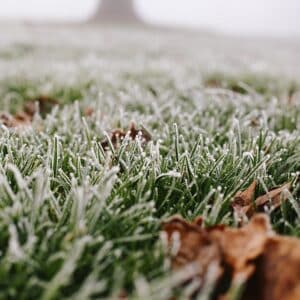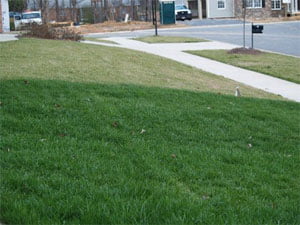Lawn Winterization: The Benefits Of Winterizing
What Is Winterization?

Winterization is probably the most important step of any fertilization program, besides the crabgrass pre-emergent. And there are huge benefits to winterizing your lawn. Your winterization app typically goes down in the late fall or early winter, before the ground freezes. Here in Central Indiana, that can be from mid November all the way to mid December. Winter fertilizer should contain a high amount of nitrogen, and sometimes contains a good dose of phosphorus to help with root development. The application can be done any time during this window, as long as there is not a coating of snow covering the grass. The goal of a winter fertilization is to keep the lawn fed through winter and allow it to store food that helps it come out of dormancy in the spring.
What Are The Benefits Of Winterizing My Lawn

The lawn is not going to show immediate effects from a winterization application. These benefits almost always show up later. One of the biggest benefits of a winter fertilization is the boost to the health and vitality it creates in the early Spring. A lawn that has been properly winterized will often come out of dormancy at least 2 weeks before a lawn that was not. A winterized lawn will thicken up in the Spring much faster after a fall aeration and seeding, because the young grasses have more access to food supplies that promote growth and thickening. In the photo above, you can see a lawn that was photographed in March, and again 12 months later. On the left, is the lawn before beginning treatments. On the right, a year later, is the same lawn after being winterized. The difference speaks for itself.
Why Is Winterization So Important?

During the heat of Summer, our cool season grasses can suffer a tremendous amount of stress and damage. Lack of rainfall and high temperatures can push our cool season lawns into a semi-dormant state, where little top growth or root development takes place. As temperatures start to recede in the fall, and rainfall increases, the lawn spends a huge portion of its available resources to repair itself. It is not until mid to late fall that the lawn begins truly storing nutrients for the winter. Making sure those nutrients are readily available is what winterization is all about. It can make the difference between having a good enough lawn and having a great lawn. Also, one of the best ways to prevent weeds and limit the amount of pesticide needed for the lawn is to keep the lawn thick and healthy. So, winterization not only makes sense from an aesthetic point of view, but also from an environmental outlook as well.
If you are looking for expert lawncare help, feel free to call our office at 317-748-3153. Or visit us online at www.BlueDuckLawnCare.com. Or click HERE to request an estimate.